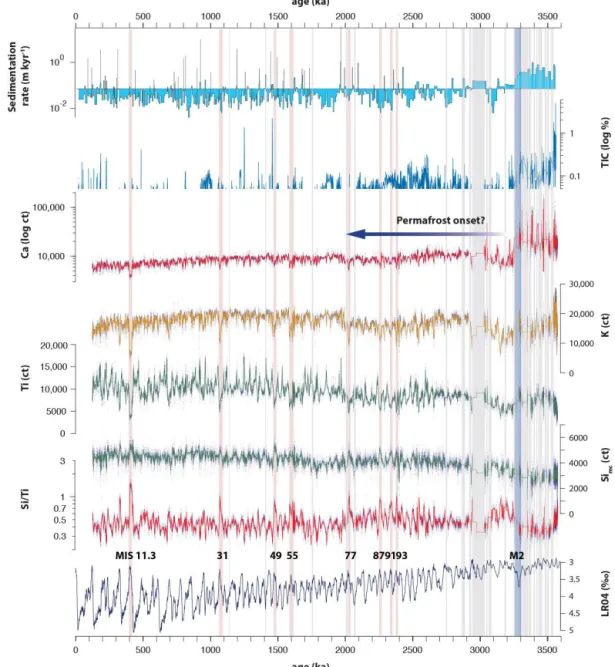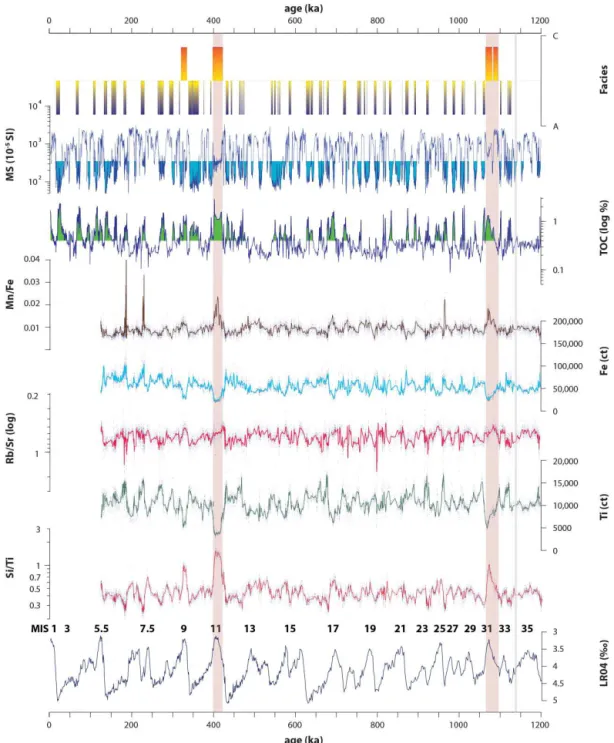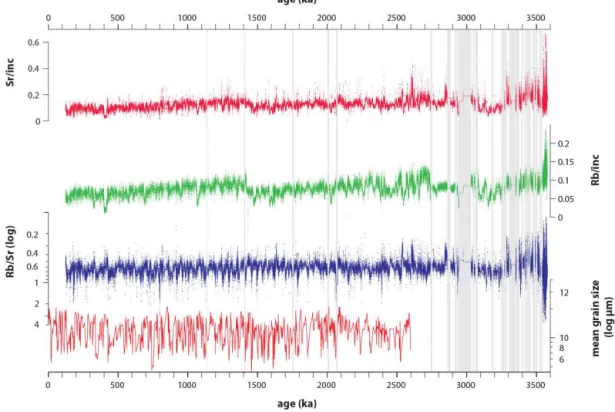Pliocene to Pleistocene climate and environmental history of Lake El'gygytgyn, Far East Russian Arctic, based on high-resolution inorganic geochemistry data
Texto
Imagem




Documentos relacionados
Figure 5. Longitudinal profiles of the simulated water quality parameters and water quality data monitored at points 3 to 6... and sedimentation of inorganic phosphorus) in
List of ciliate species registered in distinct strata (Ep = Epilimnion; Me = Metalimnion; Hy = Hypolimnion) in two hydrological periods (High water and Low water) at Guaraná Lake (H
The objectives of this study were to establish DRIS norms for sugarcane crop, to compare mean yield, foliar nutrient contents and variance of nutrient ratios of low- and
Conclusion: High mortality was probably related to the environmental and occupational exposure to many organic and inorganic chemical substances, considered carcinogenics, such
Rock magnetic, biochemical and inorganic records of the sediment cores PG1351 and Lz1024 from Lake El’gygytgyn, Chukotka peninsula, Far East Russian Arctic, were subject to
High percentages of Betula and Alnus characterize the late glacial and early Holocene pollen assemblages at Lake E (Fig. 2; pollen zone 1a), an assemblage that is common across
Seven of the reservoirs (Lake Wohlen, Lake Gruy `ere, Lake Sihl, Lake Luzzone, Lake Santa Maria, Lake Oberaar and Lake Lungern) were sampled several times during the campaign
From 0–1.2 Ma, diatoms in the Lake El’gygytgyn sediment record vary dramatically in plankton and periphyton species assemblage and abundance. These variations cor- relate to



